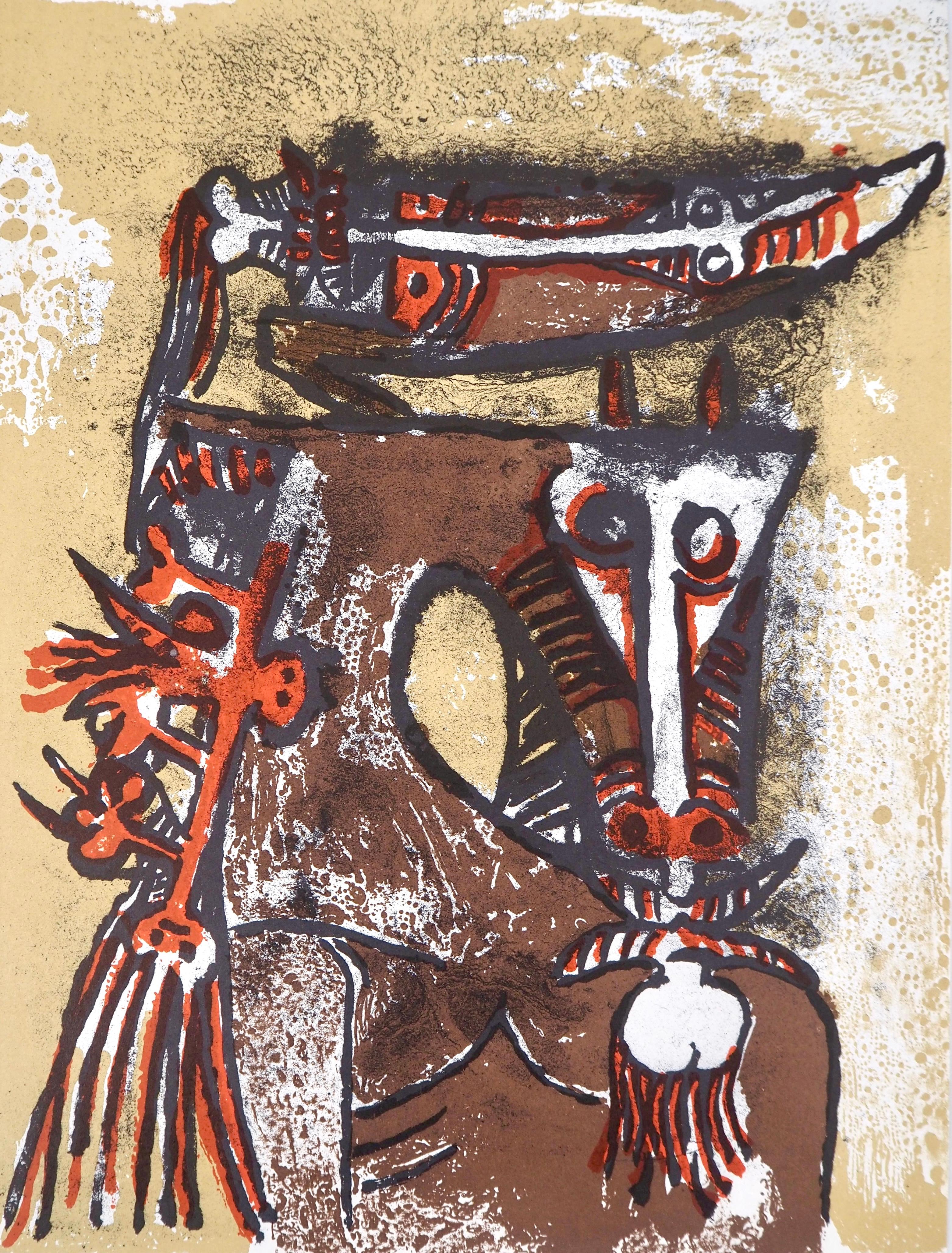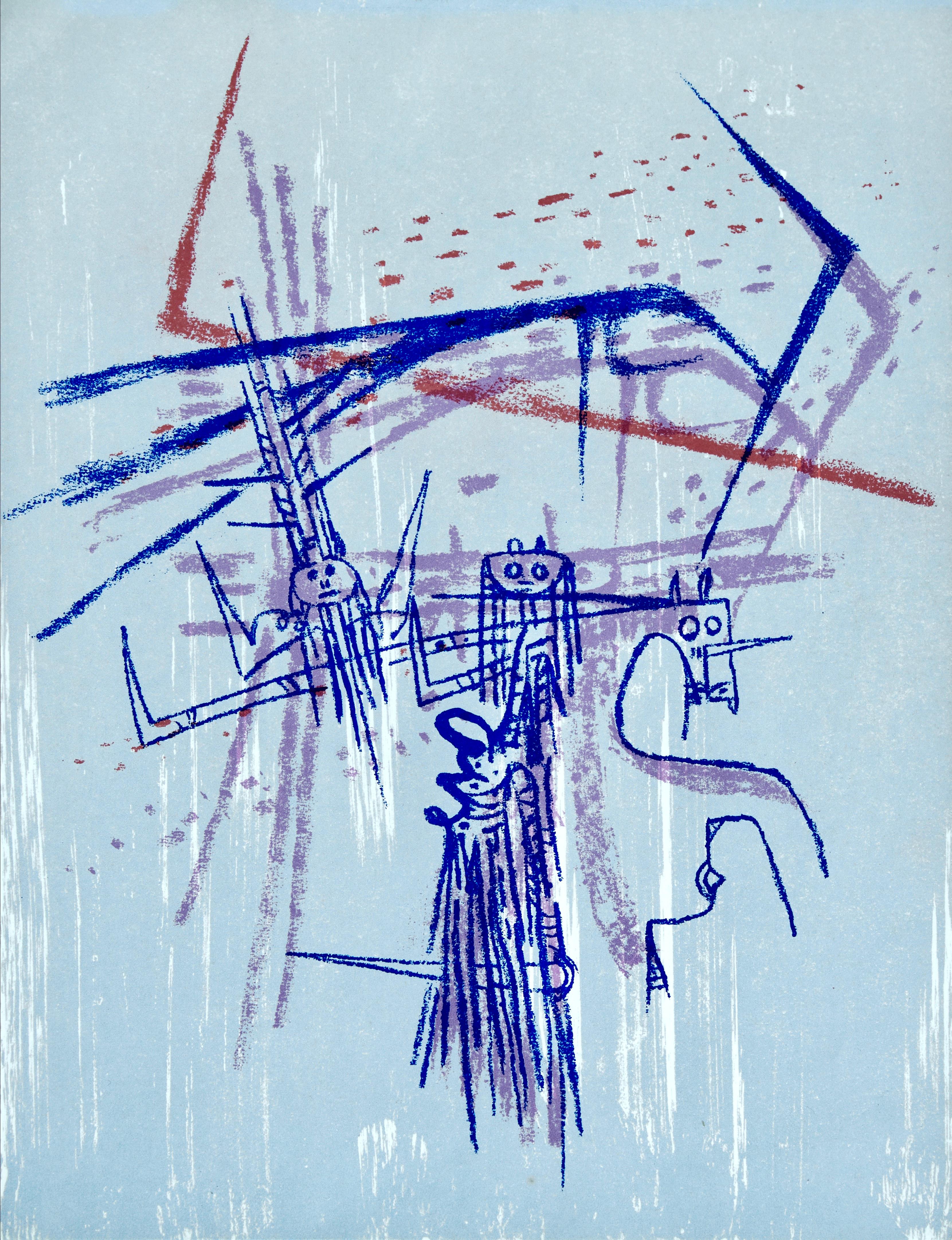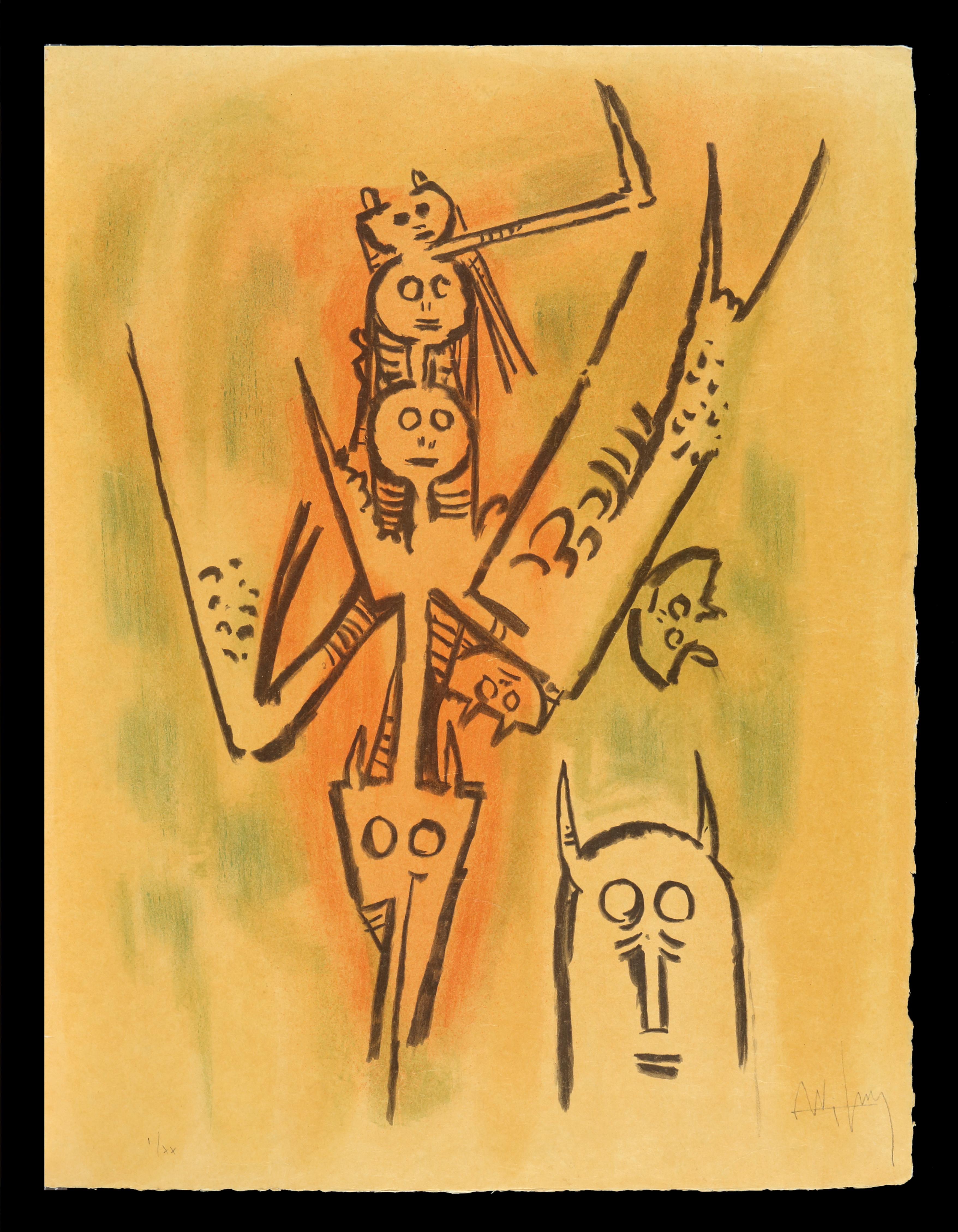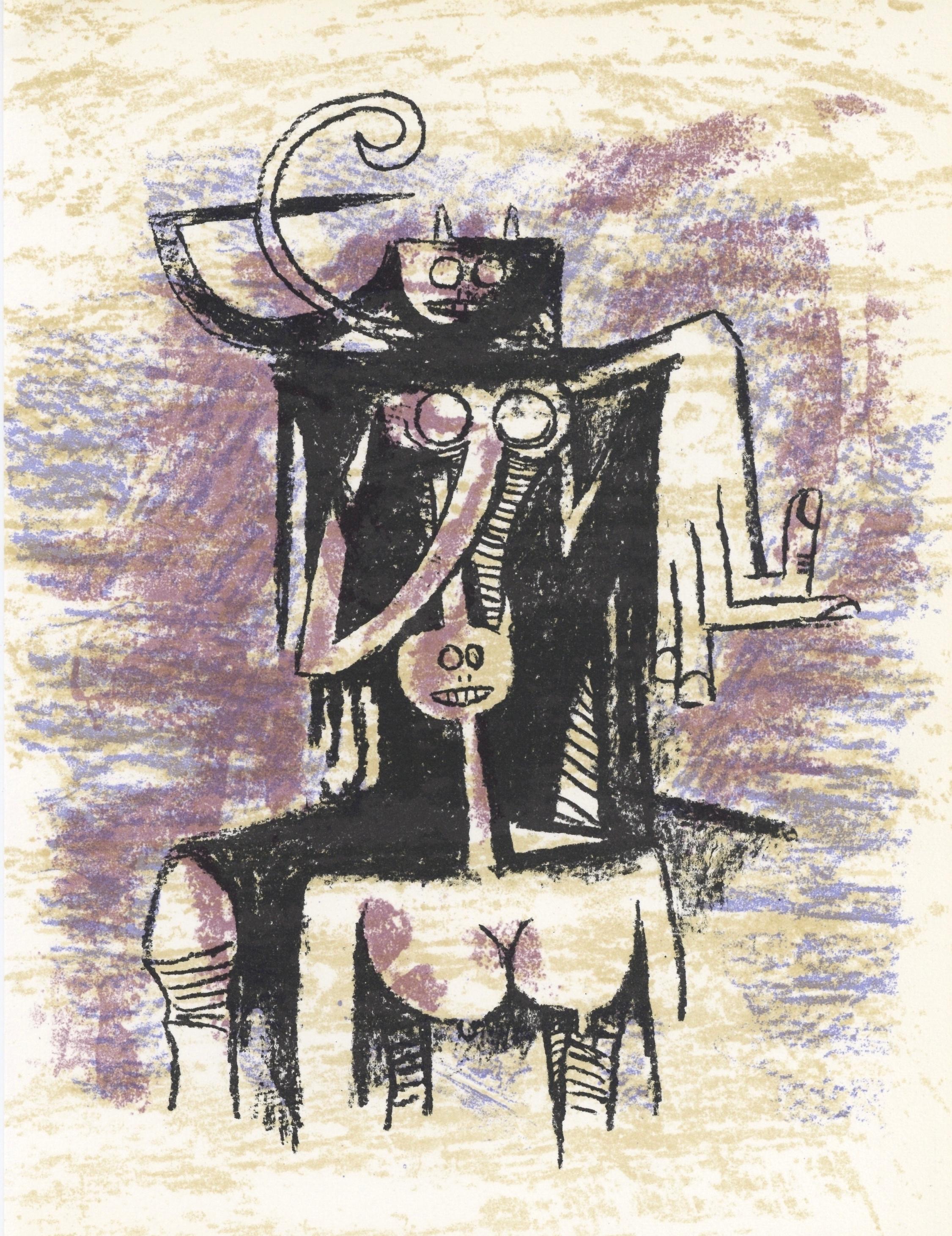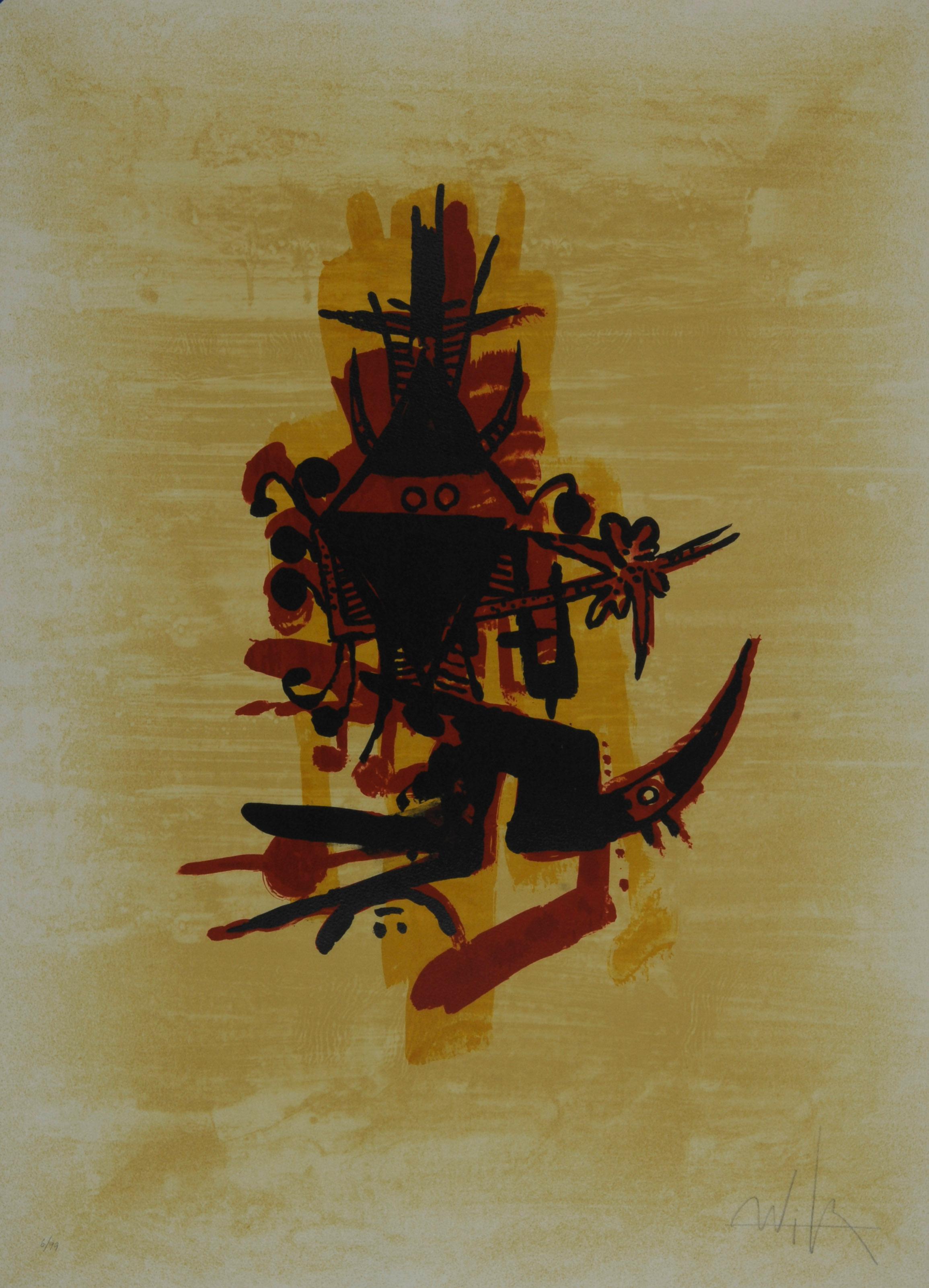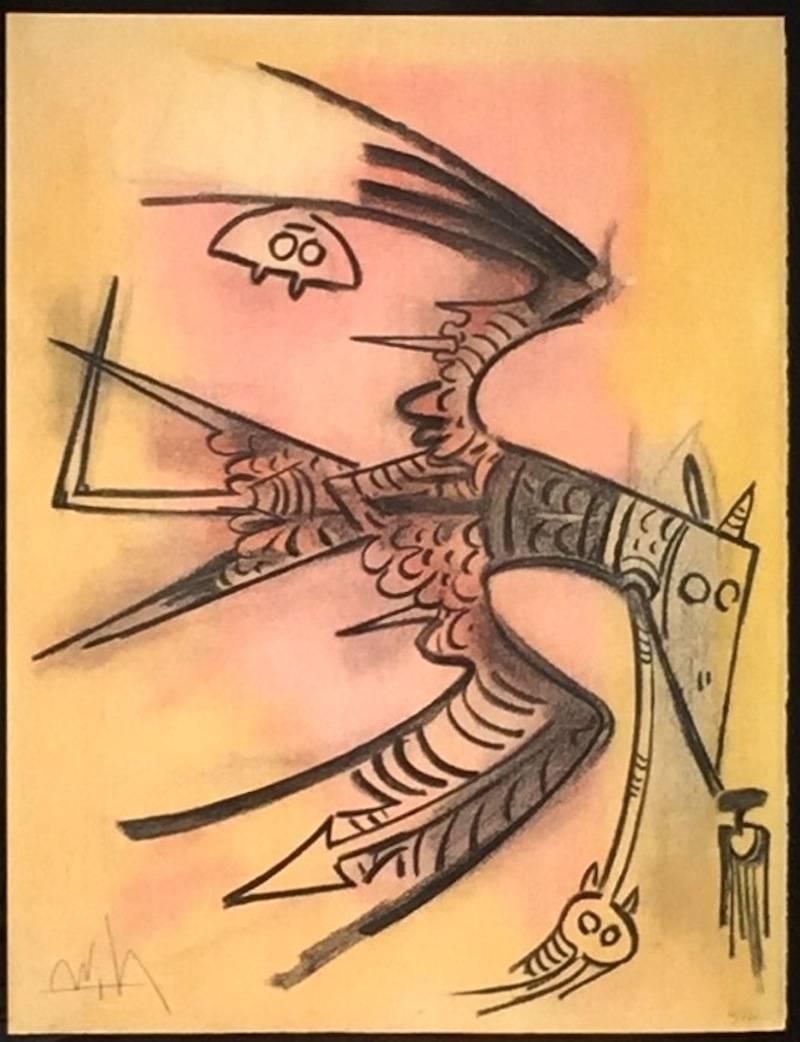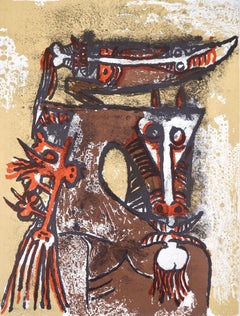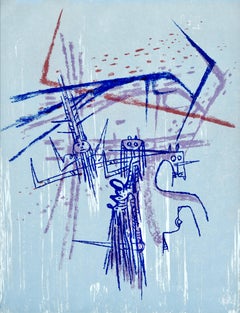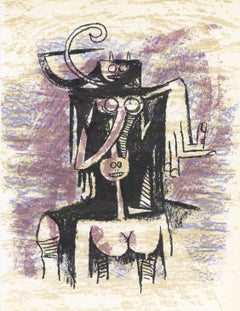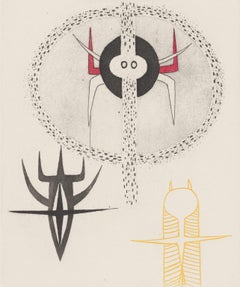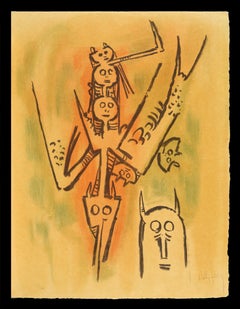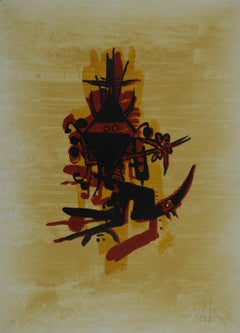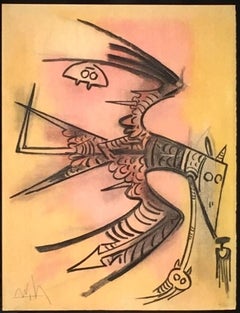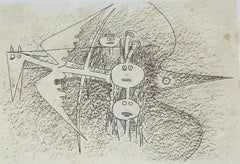This exquisite lithograph by Wifredo Lam (1902–1982), titled Totem, from the album XXe siecle, Numero special, Wifredo Lam, Nouvelle serie, XLIe Annee, No. 52, originates from the 1979 edition published by Societe Internationale d'Art XXe siecle, Paris, and printed by I.M.A.G.E., Paris, 1979. Totem exemplifies Lam’s distinctive fusion of Surrealism, Cubism, and Afro-Cuban spirituality, uniting myth, rhythm, and abstraction into a deeply symbolic visual language that transcends cultural boundaries.
Executed as a lithograph on velin paper, this work measures 12.5 x 9.75 inches. Unsigned and unnumbered, as issued. The edition exemplifies the superb craftsmanship of I.M.A.G.E., Paris.
Artwork Details:
Artist: Wifredo Lam (1902–1982)
Title: Totem, from the album XXe siecle, Numero special, Wifredo Lam, Nouvelle serie, XLIe Annee, No. 52
Medium: Lithograph on velin paper
Dimensions: 12.5 x 9.75 inches (31.75 x 24.77 cm)
Inscription: Unsigned and unnumbered, as issued
Date: 1979
Publisher: Societe Internationale d'Art XXe siecle, Paris
Printer: I.M.A.G.E., Paris
Catalogue raisonne reference: Lam, Wifredo. Catalogue raisonne de l'oeuvre grave et lithographie, by Lou Laurin-Lam and Carlos Luis, Lausanne: Poligrafa, 1989, illustration 686.
Condition: Well preserved, consistent with age and medium
Provenance: From the album XXe siecle, Numero special, Wifredo Lam, Nouvelle serie, XLIe Annee, No. 52, published by Societe Internationale d'Art XXe siecle, Paris, and printed by I.M.A.G.E., Paris, 1979
About the Publication:
Gualtieri di San Lazzaro's XXe Siecle (Twentieth Century) was one of the most influential art journals of the modern era, founded in Paris in 1938 as a platform for the greatest painters, sculptors, and writers of the 20th century. San Lazzaro, a visionary editor, critic, and champion of modernism, believed that art and literature should coexist as expressions of a shared human imagination. Under his direction, XXe Siecle became a cultural bridge between Europe and the wider world, publishing special issues devoted to leading figures such as Picasso, Matisse, Chagall, Braque, Calder, Miro, Kandinsky, and Leger. Each edition combined essays by renowned critics and poets with original lithographs printed by the foremost ateliers of Paris, London, and New York, including Mourlot, Curwen, and Universal Graphics, creating a uniquely rich dialogue between text and image. Through XXe Siecle, San Lazzaro preserved the creative spirit of the avant-garde during and after World War II, championing freedom of expression and the evolution of abstraction, surrealism, and modern thought. Over nearly four decades, the journal shaped international taste and defined the intellectual landscape of postwar art publishing. Today, XXe Siecle remains celebrated for its extraordinary synthesis of art, literature, and design, an enduring testament to Gualtieri di San Lazzaro's belief that the visual arts are the soul of the modern age.
About the Artist:
Wifredo Lam (1902–1982) was a Cuban painter, printmaker, and sculptor whose visionary synthesis of Surrealism, Cubism, and Afro-Cuban spirituality established him as one of the most important and transformative artists of the 20th century. A pioneer of global modernism, Lam united Western avant-garde abstraction with non-Western mythology and ancestral ritual, creating a universal language of art rooted in hybridity, resistance, and spiritual depth. Born in Sagua La Grande, Cuba, to a Chinese father and Afro-Cuban mother of Congolese descent, Lam absorbed the island’s multicultural rhythms, from Santeria and Abakua rituals to the fluid intersections of African, Asian, and European traditions. After studying in Madrid, he moved to Spain in 1923 and was profoundly shaped by the modernist revolutions of Pablo Picasso, Alexander Calder, Alberto Giacometti, Salvador Dali, Joan Miro, Wassily Kandinsky, Marcel Duchamp, and Man Ray. The Spanish Civil War ignited his political consciousness and lifelong belief in art as a vehicle for liberation. Fleeing fascism, Lam arrived in Paris in 1938, where his friendship with Pablo Picasso proved pivotal—Picasso introduced him to Andre Breton, Max Ernst, and Paul Eluard, drawing him into the heart of Surrealism. When World War II forced his return to Cuba in 1941, Lam reconnected with his cultural roots and began to develop the mature style that defined his legacy: a bold synthesis of African-Caribbean myth and European modernist form. His masterpiece The Jungle (1943), now in the Museum of Modern Art, New York, features totemic hybrid figures and lush tropical forms that symbolize both spiritual power and postcolonial struggle, marking a turning point in modern art. Lam’s works throughout the 1940s–1970s—such as Zambezia, Zambezia (1950), Nativite (1959), and A Trois Centimetres de la Terre (1962)—continued to merge ancestral symbolism with biomorphic abstraction, creating compositions alive with rhythm, ritual, and transformation. Like Picasso, he redefined the figure; like Kandinsky, he infused abstraction with spiritual energy; and like Miro, he used symbolism to express dream and myth. His art became a visual manifesto for cultural reclamation and hybridity, inspiring later artists including Jean-Michel Basquiat, David Hammons, Kerry James Marshall, and Chris Ofili. Lam’s work has been celebrated in major retrospectives at the Tate Modern, Centre Pompidou, and Museum of Modern Art, and is held in leading collections worldwide. Standing alongside Pablo Picasso, Alexander Calder, Alberto Giacometti, Salvador Dali, Joan Miro, Wassily Kandinsky, Marcel Duchamp, and Man Ray, Lam remains a global icon of modernism—an artist who transformed the avant-garde into a universal language of the sacred, the political, and the poetic. His highest auction record was achieved by A Trois Centimetres de la Terre (1962), which sold for $9.6 million USD at Sotheby’s, New York, on May 17, 2017, reaffirming his enduring legacy as one of the most visionary and collectible artists of the 20th century.
Wifredo Lam Totem, Lam 1979 XXe siecle, Lam IMAGE lithograph, Lam velin paper, Lam collectible print.
